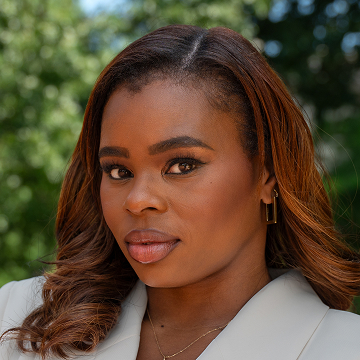For years, Anna Cypert responded to the daily texts, calls and letters that she received from Democrats asking for money, often marked URGENT or SOS. The former nurse sent what she could: $5 to the Democratic Congressional Campaign Committee or $25 to Joe Biden, adding up to more than 750 individual donations over the last decade. Last August, she stopped.
Cypert told NOTUS that she cut back on donating to campaigns due to the high cost of living, especially as a retiree on Social Security, though her political views have stayed the same. Across the country, other donors are similarly refusing to pull out their credit cards this cycle in what started as a subtle decline of small-dollar political giving but is rapidly becoming a major problem for campaigns.
“I don’t have very much money,” said Cypert, who is 83 and lives near her daughter in Minnesota. “I was very generous when I was working. I love Joe Biden, and I’m voting for him.”
In a stark reversal from recent political history, both parties have seen a significant decline this election cycle in the small-dollar contributions they harvest via text and email, largely from rank-and-file voters of modest means. Gone are the days when any candidate could expect to rake in small donations, according to Republican and Democratic digital strategists. Instead, only the smartest campaigns — and the perennial guests on Fox News — see the type of cash influx that was routine five years ago.
“We have squeezed every last penny in a period of time when the pennies are harder to come by,” said John Hall, a GOP digital strategist.
For Republicans, the downturn started in the 2022 midterm election. But Democrats say they are also seeing small donations decrease this election cycle across a range of candidates and liberal organizations.
“I’ve seen it. I’ve heard it,” said Stephanie Schriock, former president of the Democratic group EMILYs List. “It’s definitely been a slowdown this election cycle on small-dollar gifts.”
The change has rocked fundraising for the Republican National Committee, which has seen small-dollar donations — generally seen as contributions of less than $200 — plummet from $39 million at this point in 2020 to $14 million so far this year. But smaller declines are taking place across the country. Strategists attribute the slowdown to a combination of inflation, widespread exhaustion over the state of politics and poor donor maintenance from both parties. The change is remaking budgets, forcing campaigns to refocus on wealthy donors and confront the possibility that they simply might not have as much cash to spend as they expected.
“It’s been really frustrating because for a couple of cycles, clients were getting really used to large sums of money coming in from online,” said Amanda Elliott, a GOP digital strategist. “It was great for a while, and now it’s been tapering off.”
The exception is the candidates who excite the base and major news events. Former President Donald Trump reportedly received a flood of small-dollar donations after a New York jury convicted him on 34 counts last week. On the right, Jim Jordan and Marjorie Taylor Greene have seen their donations surge as they morphed into bona fide cable news celebrities.
Greene has seen the bigger increase: She had raised roughly $60,000 from small-dollar donors during the first quarter of 2020; this year, she raked in $775,000 during the same period of time. Individual races that capture voters’ attention — like the reelection bids of Democratic Sens. Jon Tester and Sherrod Brown — can also raise big sums.
But those success stories are the exception. The lull has hit a range of campaigns for House and Senate on both sides of the aisle. It’s most evident at the political committees charged with electing members to the House and Senate: All four of them have seen small-dollar donations decline.
The National Republican Congressional Committee has seen its small-dollar donations drop from $13.4 million at this point in 2020 to $7.2 million so far this calendar year — a significant decline. Republicans on the Senate side are faring only slightly better: Their small-dollar donations have dipped from $12 million at this point in 2020 to $10.7 million this year.
Democrats are struggling too. The DCCC’s donations dropped from $13 million at this point in 2020 to $11 million this year, while the committee’s Senate equivalent saw a drop from $10.1 million to $9.8 million.
Individual House members, including those in swing districts, are also struggling with a dip in small donations. GOP Rep. Don Bacon, for instance, went from about $35,000 from small donors during the first quarter of 2020 to about $25,000 through March of this year.
Wisconsin Democratic Rep. Mark Pocan’s small-dollar fundraising dropped from $47,000 during the first quarter of 2020 to $19,000 during the first three months of this year. Back then, a whopping 65% of his contributions were from small-dollar donors — likely due to a surge in interest in Democrats taking back the House. Now, those donations make up 38% of his total contributions.
Small-dollar donations account for a significant portion — typically, 30% to 50% — of a committee’s overall contributions. They are also a signal to campaigns that the party’s grassroots are engaged in a race and will show up to vote.
The shift has shocked veterans of political campaigns. Since the Supreme Court’s Citizens United decision in 2010, the story of elections has largely been one about candidates raising ever-larger sums of money. Fundraising declines like the one happening this election are rare.
Strategists believe the biggest reason for the drop is that rising costs of living have shrunk donors’ budgets.
Garnett Douglass quit giving in 2021 after he retired and put a significant amount of his savings into renovating a home in Missouri’s Ozark mountains. A former salesperson for a building materials manufacturing company, Douglass is acutely aware of the surging cost of the plywood and other necessities that went into his renovation, a key cost-of-living increase that led him to stop giving.
“It’s pretty simple: It’s economics,” said the 76-year-old Douglass.
Douglass still receives about 40 to 50 emails, texts and calls a day from Republicans wanting money. GOP digital strategists told NOTUS this has become a distressingly familiar dynamic: Individual Republican donors who contribute even once can soon face an unending barrage of fundraising solicitations from the party, quickly exhausting their ability to give.
“The overarching problem we have is that we have done nothing to build a donor ecosystem and done nothing to foster that ecosystem,” Hall said. “A lot of vendors are taking advantage of the few donors we have, and it’s resulting in less and less fundraising over time.”
Compared to their Republican counterparts, Democratic strategists were less concerned about the problem of over-soliciting their donors. But they say some of the party’s notoriously alarmist fundraising messages nonetheless had, over time, turned off some of their contributors.
“If you tell people for six years that the sky is falling, when the sky is actually falling, they’re not going to believe you,” said Amanda Litman, co-founder of the progressive group Run for Something.
“I think it’s gotten worse,” she added, “and I think they’ve had to get more desperate and urgent because the old things aren’t working.”
Litman said many Democratic donors she talks to, both big and small, are still in disbelief that the election will be a rematch of Biden and Trump and are holding out on any additional donations until a different Democratic nominee for president emerges.
Sign up for the latest from NOTUS.
A broader exhaustion with the state of politics this year has turned off many donors, strategists say.
“I think it’s as simple as ‘I can’t believe we have to do this again. And I’m already having a hard time paying for my milk and my eggs, and so I’m just going to hold off and see how this goes for a while,’” Schriock said.
Strategists disagree about whether the fundraising dip will continue. Schriock said she expects small-dollar donors to resurface for her party as the election draws nearer and the threat of another Trump presidency looms larger.
Others are less sure of a bounce back.
“There is something big at work here,” Elliott said. “Donors are just getting tired … of being asked to donate to causes and feeling like they’re not getting a return on their investment.”
—
Alex Roarty and Maggie Severns are reporters at NOTUS. Nuha Dolby is a NOTUS reporter and an Allbritton Journalism Institute fellow.
Sign in
Log into your free account with your email. Don’t have one?
Check your email for a one-time code.
We sent a 4-digit code to . Enter the pin to confirm your account.
New code will be available in 1:00
Let’s try this again.
We encountered an error with the passcode sent to . Please reenter your email.


